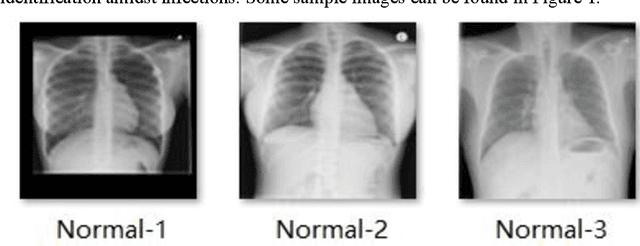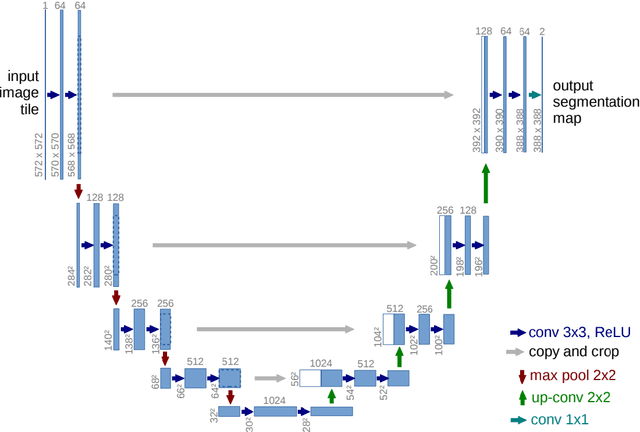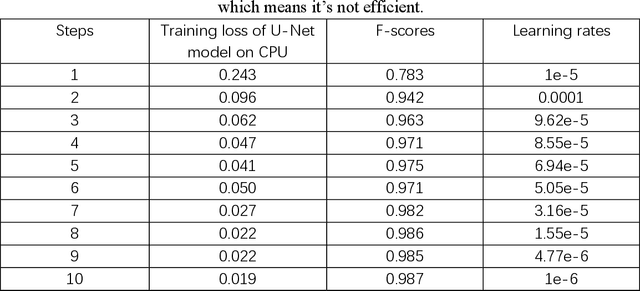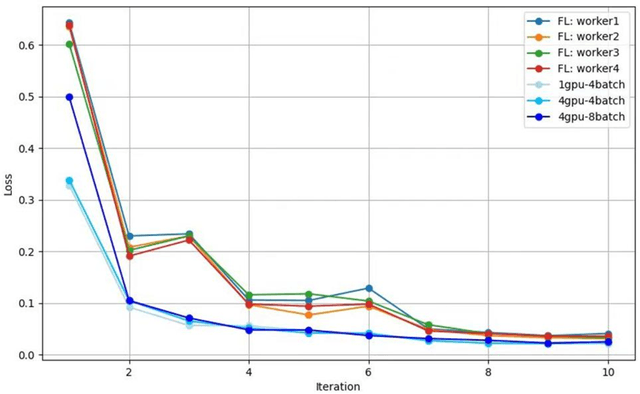cancer detection
Cancer detection using Artificial Intelligence (AI) involves leveraging advanced machine learning algorithms and techniques to identify and diagnose cancer from various medical data sources. The goal is to enhance early detection, improve diagnostic accuracy, and potentially reduce the need for invasive procedures.
Papers and Code
Advancements in Real-Time Oncology Diagnosis: Harnessing AI and Image Fusion Techniques
Mar 14, 2025Real-time computer-aided diagnosis using artificial intelligence (AI), with images, can help oncologists diagnose cancer with high accuracy and in an early phase. We reviewed real-time AI-based analyzed images for decision-making in different cancer types. This paper provides insights into the present and future potential of real-time imaging and image fusion. It explores various real-time techniques, encompassing technical solutions, AI-based imaging, and image fusion diagnosis across multiple anatomical areas, and electromagnetic needle tracking. To provide a thorough overview, this paper discusses ultrasound image fusion, real-time in vivo cancer diagnosis with different spectroscopic techniques, different real-time optical imaging-based cancer diagnosis techniques, elastography-based cancer diagnosis, cervical cancer detection using neuromorphic architectures, different fluorescence image-based cancer diagnosis techniques, and hyperspectral imaging-based cancer diagnosis. We close by offering a more futuristic overview to solve existing problems in real-time image-based cancer diagnosis.
An Inclusive Foundation Model for Generalizable Cytogenetics in Precision Oncology
May 21, 2025Chromosome analysis is vital for diagnosing genetic disorders and guiding cancer therapy decisions through the identification of somatic clonal aberrations. However, developing an AI model are hindered by the overwhelming complexity and diversity of chromosomal abnormalities, requiring extensive annotation efforts, while automated methods remain task-specific and lack generalizability due to the scarcity of comprehensive datasets spanning diverse resource conditions. Here, we introduce CHROMA, a foundation model for cytogenomics, designed to overcome these challenges by learning generalizable representations of chromosomal abnormalities. Pre-trained on over 84,000 specimens (~4 million chromosomal images) via self-supervised learning, CHROMA outperforms other methods across all types of abnormalities, even when trained on fewer labelled data and more imbalanced datasets. By facilitating comprehensive mapping of instability and clonal leisons across various aberration types, CHROMA offers a scalable and generalizable solution for reliable and automated clinical analysis, reducing the annotation workload for experts and advancing precision oncology through the early detection of rare genomic abnormalities, enabling broad clinical AI applications and making advanced genomic analysis more accessible.
Automated Quality Evaluation of Cervical Cytopathology Whole Slide Images Based on Content Analysis
May 20, 2025The ThinPrep Cytologic Test (TCT) is the most widely used method for cervical cancer screening, and the sample quality directly impacts the accuracy of the diagnosis. Traditional manual evaluation methods rely on the observation of pathologist under microscopes. These methods exhibit high subjectivity, high cost, long duration, and low reliability. With the development of computer-aided diagnosis (CAD), an automated quality assessment system that performs at the level of a professional pathologist is necessary. To address this need, we propose a fully automated quality assessment method for Cervical Cytopathology Whole Slide Images (WSIs) based on The Bethesda System (TBS) diagnostic standards, artificial intelligence algorithms, and the characteristics of clinical data. The method analysis the context of WSIs to quantify quality evaluation metrics which are focused by TBS such as staining quality, cell counts and cell mass proportion through multiple models including object detection, classification and segmentation. Subsequently, the XGBoost model is used to mine the attention paid by pathologists to different quality evaluation metrics when evaluating samples, thereby obtaining a comprehensive WSI sample score calculation model. Experimental results on 100 WSIs demonstrate that the proposed evaluation method has significant advantages in terms of speed and consistency.
Class Imbalance Correction for Improved Universal Lesion Detection and Tagging in CT
Apr 08, 2025Radiologists routinely detect and size lesions in CT to stage cancer and assess tumor burden. To potentially aid their efforts, multiple lesion detection algorithms have been developed with a large public dataset called DeepLesion (32,735 lesions, 32,120 CT slices, 10,594 studies, 4,427 patients, 8 body part labels). However, this dataset contains missing measurements and lesion tags, and exhibits a severe imbalance in the number of lesions per label category. In this work, we utilize a limited subset of DeepLesion (6\%, 1331 lesions, 1309 slices) containing lesion annotations and body part label tags to train a VFNet model to detect lesions and tag them. We address the class imbalance by conducting three experiments: 1) Balancing data by the body part labels, 2) Balancing data by the number of lesions per patient, and 3) Balancing data by the lesion size. In contrast to a randomly sampled (unbalanced) data subset, our results indicated that balancing the body part labels always increased sensitivity for lesions >= 1cm for classes with low data quantities (Bone: 80\% vs. 46\%, Kidney: 77\% vs. 61\%, Soft Tissue: 70\% vs. 60\%, Pelvis: 83\% vs. 76\%). Similar trends were seen for three other models tested (FasterRCNN, RetinaNet, FoveaBox). Balancing data by lesion size also helped the VFNet model improve recalls for all classes in contrast to an unbalanced dataset. We also provide a structured reporting guideline for a ``Lesions'' subsection to be entered into the ``Findings'' section of a radiology report. To our knowledge, we are the first to report the class imbalance in DeepLesion, and have taken data-driven steps to address it in the context of joint lesion detection and tagging.
UNet-3D with Adaptive TverskyCE Loss for Pancreas Medical Image Segmentation
May 04, 2025Pancreatic cancer, which has a low survival rate, is the most intractable one among all cancers. Most diagnoses of this cancer heavily depend on abdominal computed tomography (CT) scans. Therefore, pancreas segmentation is crucial but challenging. Because of the obscure position of the pancreas, surrounded by other large organs, and its small area, the pancreas has often been impeded and difficult to detect. With these challenges , the segmentation results based on Deep Learning (DL) models still need to be improved. In this research, we propose a novel adaptive TverskyCE loss for DL model training, which combines Tversky loss with cross-entropy loss using learnable weights. Our method enables the model to adjust the loss contribution automatically and find the best objective function during training. All experiments were conducted on the National Institutes of Health (NIH) Pancreas-CT dataset. We evaluated the adaptive TverskyCE loss on the UNet-3D and Dilated UNet-3D, and our method achieved a Dice Similarity Coefficient (DSC) of 85.59%, with peak performance up to 95.24%, and the score of 85.14%. DSC and the score were improved by 9.47% and 8.98% respectively compared with the baseline UNet-3D with Tversky loss for pancreas segmentation. Keywords: Pancreas segmentation, Tversky loss, Cross-entropy loss, UNet-3D, Dilated UNet-3D
Distributed U-net model and Image Segmentation for Lung Cancer Detection
Feb 20, 2025



Until now, in the wake of the COVID-19 pandemic in 2019, lung diseases, especially diseases such as lung cancer and chronic obstructive pulmonary disease (COPD), have become an urgent global health issue. In order to mitigate the goal problem, early detection and accurate diagnosis of these conditions are critical for effective treatment and improved patient outcomes. To further research and reduce the error rate of hospital diagnoses, this comprehensive study explored the potential of computer-aided design (CAD) systems, especially utilizing advanced deep learning models such as U-Net. And compared with the literature content of other authors, this study explores the capabilities of U-Net in detail, and enhances the ability to simulate CAD systems through the VGG16 algorithm. An extensive dataset consisting of lung CT images and corresponding segmentation masks, curated collaboratively by multiple academic institutions, serves as the basis for empirical validation. In this paper, the efficiency of U-Net model is evaluated rigorously and precisely under multiple hardware configurations, such as single CPU, single GPU, distributed GPU and federated learning, and the effectiveness and development of the method in the segmentation task of lung disease are demonstrated. Empirical results clearly affirm the robust performance of the U-Net model, most effectively utilizing four GPUs for distributed learning, and these results highlight the potential of U-Net-based CAD systems for accurate and timely lung disease detection and diagnosis huge potential.
Longitudinal Assessment of Lung Lesion Burden in CT
Apr 09, 2025



In the U.S., lung cancer is the second major cause of death. Early detection of suspicious lung nodules is crucial for patient treatment planning, management, and improving outcomes. Many approaches for lung nodule segmentation and volumetric analysis have been proposed, but few have looked at longitudinal changes in total lung tumor burden. In this work, we trained two 3D models (nnUNet) with and without anatomical priors to automatically segment lung lesions and quantified total lesion burden for each patient. The 3D model without priors significantly outperformed ($p < .001$) the model trained with anatomy priors. For detecting clinically significant lesions $>$ 1cm, a precision of 71.3\%, sensitivity of 68.4\%, and F1-score of 69.8\% was achieved. For segmentation, a Dice score of 77.1 $\pm$ 20.3 and Hausdorff distance error of 11.7 $\pm$ 24.1 mm was obtained. The median lesion burden was 6.4 cc (IQR: 2.1, 18.1) and the median volume difference between manual and automated measurements was 0.02 cc (IQR: -2.8, 1.2). Agreements were also evaluated with linear regression and Bland-Altman plots. The proposed approach can produce a personalized evaluation of the total tumor burden for a patient and facilitate interval change tracking over time.
Automating tumor-infiltrating lymphocyte assessment in breast cancer histopathology images using QuPath: a transparent and accessible machine learning pipeline
Apr 23, 2025In this study, we built an end-to-end tumor-infiltrating lymphocytes (TILs) assessment pipeline within QuPath, demonstrating the potential of easily accessible tools to perform complex tasks in a fully automatic fashion. First, we trained a pixel classifier to segment tumor, tumor-associated stroma, and other tissue compartments in breast cancer H&E-stained whole-slide images (WSI) to isolate tumor-associated stroma for subsequent analysis. Next, we applied a pre-trained StarDist deep learning model in QuPath for cell detection and used the extracted cell features to train a binary classifier distinguishing TILs from other cells. To evaluate our TILs assessment pipeline, we calculated the TIL density in each WSI and categorized them as low, medium, or high TIL levels. Our pipeline was evaluated against pathologist-assigned TIL scores, achieving a Cohen's kappa of 0.71 on the external test set, corroborating previous research findings. These results confirm that existing software can offer a practical solution for the assessment of TILs in H&E-stained WSIs of breast cancer.
An Ensemble-Based Two-Step Framework for Classification of Pap Smear Cell Images
Mar 14, 2025Early detection of cervical cancer is crucial for improving patient outcomes and reducing mortality by identifying precancerous lesions as soon as possible. As a result, the use of pap smear screening has significantly increased, leading to a growing demand for automated tools that can assist cytologists managing their rising workload. To address this, the Pap Smear Cell Classification Challenge (PS3C) has been organized in association with ISBI in 2025. This project aims to promote the development of automated tools for pap smear images classification. The analyzed images are grouped into four categories: healthy, unhealthy, both, and rubbish images which are considered as unsuitable for diagnosis. In this work, we propose a two-stage ensemble approach: first, a neural network determines whether an image is rubbish or not. If not, a second neural network classifies the image as containing a healthy cell, an unhealthy cell, or both.
An ensemble deep learning approach to detect tumors on Mohs micrographic surgery slides
Apr 07, 2025Mohs micrographic surgery (MMS) is the gold standard technique for removing high risk nonmelanoma skin cancer however, intraoperative histopathological examination demands significant time, effort, and professionality. The objective of this study is to develop a deep learning model to detect basal cell carcinoma (BCC) and artifacts on Mohs slides. A total of 731 Mohs slides from 51 patients with BCCs were used in this study, with 91 containing tumor and 640 without tumor which was defined as non-tumor. The dataset was employed to train U-Net based models that segment tumor and non-tumor regions on the slides. The segmented patches were classified as tumor, or non-tumor to produce predictions for whole slide images (WSIs). For the segmentation phase, the deep learning model success was measured using a Dice score with 0.70 and 0.67 value, area under the curve (AUC) score with 0.98 and 0.96 for tumor and non-tumor, respectively. For the tumor classification, an AUC of 0.98 for patch-based detection, and AUC of 0.91 for slide-based detection was obtained on the test dataset. We present an AI system that can detect tumors and non-tumors in Mohs slides with high success. Deep learning can aid Mohs surgeons and dermatopathologists in making more accurate decisions.
 Add to Chrome
Add to Chrome Add to Firefox
Add to Firefox Add to Edge
Add to Edge